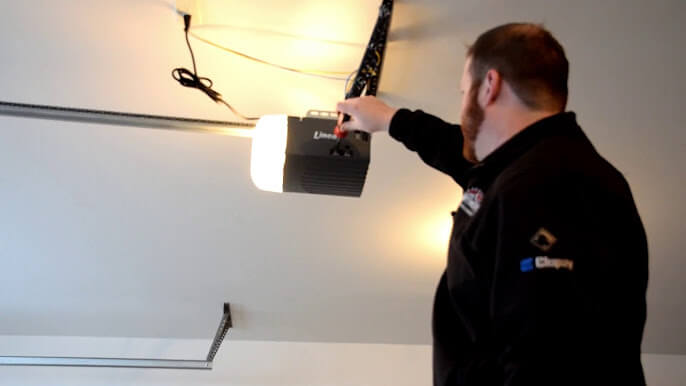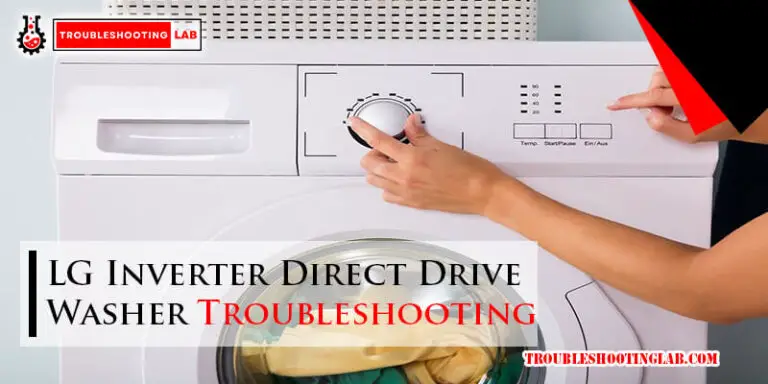Troubleshooting Linear Garage Door Openers: Expert Solutions
When your linear garage door opener is not working, it may be due to a disrupted remote signal or misaligned safety sensors. Check if the batteries need to be replaced, and if that doesn’t solve the issue, it’s possible that the signal between the opener transmitter and the remote is disrupted or the door opener receiving antennae is damaged.
Another common problem is misaligned sensors, which can cause the garage door to open on its own. In this case, it is recommended to have a professional technician inspect and repair the garage door opener. Additionally, if your garage door is not opening and closing properly, there may be other underlying issues that need to be addressed.

Common Issues With Linear Garage Door Openers
Garage Door Opener Does Not Work Sometimes?
One of the most common issues homeowners face with their linear garage door openers is intermittent power problems. This can be frustrating, especially when you’re in a hurry to leave or arrive home. The problem may lie in the disrupted remote signal between the opener transmitter and the remote control.
To troubleshoot this issue, start by replacing the batteries in your remote control. Weak batteries can cause the signal to be too weak to reach the opener. However, if the door still does not open or close properly, the disruption may be due to the remote control being out of range or the opener’s receiving antennae being disrupted or damaged.
To ensure your remote control is within range, make sure you are within the recommended distance. Typically, this is about 30 feet from the opener. Additionally, check if there are any objects blocking the signal between the remote and the opener, such as walls, appliances, or other electronic devices.
If proximity and signal obstructions are not the issue, inspect the opener’s receiving antennae for any signs of damage or disconnection. Make sure the antenna is properly aligned in its socket and securely connected. If there are any loose wires or damaged components, they may need to be repaired or replaced.
Another common issue with linear garage door openers is sensor malfunctions, causing the door not to close properly. This can be a safety concern, as the sensors are designed to detect any obstructions in the door’s path. If the sensors are misaligned, dirty, or damaged, they may prevent the door from closing.
To troubleshoot sensor malfunctions, start by checking if there are any objects blocking the sensor’s line of sight. Clear away any debris, such as dust, cobwebs, or leaves, that may be obstructing the sensors. Ensure that the sensors are properly aligned and facing each other. If they are misaligned, adjust them until the indicator lights on both sensors are solid or blinking.
If the sensor lights are not functioning correctly or there are no visible obstructions, inspect the sensor’s wiring for any signs of damage or loose connections. Make sure the wires are securely connected to the sensor and the opener’s main unit. Any damaged wiring should be replaced to ensure proper functionality.
In addition to these common issues, programming errors can also cause problems with Linear garage door openers. If you’re experiencing difficulties with programming your remote control or keypad, refer to the opener’s manual for step-by-step instructions. Ensure that you follow the programming process correctly, including pressing the appropriate buttons, entering the correct codes, and waiting for the indicator lights to respond.
Lastly, strange noises during operation can be another indication of a problem with your linear garage door opener. If you notice any grinding, scraping, or screeching sounds, it may be a sign of worn-out or damaged components. In such cases, it is recommended to contact a professional technician to inspect and repair the opener to avoid further damage.
Knowing how to troubleshoot common issues with your linear garage door opener not only saves you time and frustration but also helps ensure the safety and functionality of your garage door. By addressing these problems promptly, you can enjoy a smooth and hassle-free experience with your garage door opener.
Troubleshooting Sensor Malfunctions
Checking For Obstructions In The Path Of The Sensor
One common issue that can cause sensor malfunctions in linear garage door openers is obstructions in the path of the sensor. Before diving into any complex troubleshooting steps, it’s always a good idea to start with the basics. Inspect the area around the sensors and make sure no objects are blocking their line of sight.
If you notice any debris, dirt, or spider webs on the sensors, gently clean them using a soft cloth. It’s important to keep the sensors clean and free from any obstructions to ensure proper functioning.
Inspecting The Sensor Wiring For Damage Or Loose Connections
Another potential cause of sensor malfunctions is damaged or loose wiring. Over time, the wiring connecting the sensors to the garage door opener can wear out, become frayed, or develop loose connections. This can disrupt the signal between the sensors and the opener, leading to malfunctioning garage door operation.
Check the wiring connecting the sensors to the opener and inspect it for any signs of damage. Look for exposed wires, noticeable wear and tear, or loose connections. If you notice any issues, it’s best to repair or replace the wiring to ensure proper sensor functionality.
Adjusting The Sensor Alignment
Proper sensor alignment is crucial for the smooth operation of your linear garage door opener. If the sensors are misaligned, it can trigger an error and prevent the door from closing or cause it to reverse unexpectedly.
To fix alignment issues, start by loosening the screws holding the sensors in place. Gently adjust the sensors until they are perfectly aligned with each other. Make sure the LED light on each sensor is solid and not blinking. Once you have adjusted the sensors, tighten the screws to secure them in place.
Cleaning The Sensor Lenses
Dirty or smudged sensor lenses can also lead to malfunctioning linear garage door openers. As these sensors rely on infrared beams to detect obstacles, any dirt or residue on the lenses can interfere with the signal and cause operation issues.
Carefully clean the lenses of the sensors using a soft, lint-free cloth and a mild glass cleaner. Be gentle while wiping the lenses to avoid scratching them. Once the lenses are clean, check if the sensor lights turn solid and are no longer blinking. This indicates that the lenses are clear and the sensors are functioning properly.
Replacing Faulty Sensors
If you have tried all the troubleshooting steps mentioned above and your linear garage door opener still malfunctions, it might be time to replace the faulty sensors. Over time, sensors can wear out or become damaged beyond repair, leading to persistent issues with your garage door opener.
When replacing the sensors, make sure to choose compatible replacements from the manufacturer. Follow the instructions provided in the linear garage door opener’s manual to properly install the new sensors and ensure seamless operation.
Fixing Remote Control Issues
There are several troubleshooting steps you can take to fix remote control issues with your Linear garage door opener.
Checking The Battery Level In The Remote Control
The first step in troubleshooting remote control issues is to check the battery level in your remote control. A weak battery can cause the remote control signal to become weak, resulting in the garage door opener not responding. To check the battery level, follow these steps:
- Open the battery compartment on the back of the remote control.
- Remove the old batteries and replace them with new ones.
- Close the battery compartment.
Reprogramming The Remote Control
If the battery level is not the issue, the next step is to reprogram the remote control. Reprogramming the remote control can help establish a strong and secure connection with your garage door opener. Follow these steps to reprogram the remote control:
- Locate the programming button on the garage door opener motor unit.
- Press and release the programming button.
- On the remote control, press and hold the desired button (e.g., the button you want to use to open and close the garage door).
- While holding the button, press and release the programming button on the garage door opener motor unit.
- Release the button on the remote control.
- Test the remote control to see if it now works with the garage door opener.
Resetting The Garage Door Opener’s Receiver
If reprogramming the remote control does not solve the issue, the next step is to reset the garage door opener’s receiver. Resetting the receiver can help clear any temporary glitches that may be causing the remote control issue. Follow these steps to reset the garage door opener’s receiver:
- Locate the power cord for the garage door opener.
- Unplug the power cord from the electrical outlet.
- Wait for approximately 30 seconds to 1 minute.
- Plug the power cord back into the electrical outlet.
- Test the remote control to see if it now works with the garage door opener.
Testing The Remote Control’s Signal Strength
If the issue persists, you can test the remote control’s signal strength. A weak signal can be caused by interference or other factors. Follow these steps to test the remote control’s signal strength:
- Stand near the garage door opener motor unit with the remote control.
- Press and hold the button on the remote control.
- Observe the LED light on the motor unit. If the light blinks or flashes, it indicates that the remote control’s signal strength is strong. If the light does not blink or flashes weakly, it indicates a weak signal.
- If the signal strength is weak, try moving closer to the motor unit and press the button again. If the signal strength improves, it means that distance is causing the issue.
Replacing The Remote Control If Necessary
If none of the above steps resolve the remote control issue, it might be necessary to replace the remote control. Over time, remote controls can wear out or become damaged, causing them to malfunction. Consider purchasing a new remote control compatible with your Linear garage door opener.
By following these troubleshooting steps, you can fix remote control issues with your Linear garage door opener and ensure smooth and reliable operation. Remember to always consult the manufacturer’s manual for specific instructions related to your model.
Resolving Intermittent Power Issues
if range or there may be interference from other devices. To resolve intermittent power issues with your Linear garage door opener, follow these troubleshooting steps:
1. Checking The Power Source To Ensure It Is Properly Connected
Inspect the power source for your garage door opener, ensuring that it is properly connected. Start by checking the power cord and making sure it is securely plugged into an outlet. If the power cord appears damaged or worn, it may need to be replaced.
2. Inspecting The Power Cord For Damage Or Loose Connections
Carefully inspect the power cord for any signs of damage, such as frayed wires or exposed insulation. If you find any damage, it is important to replace the power cord immediately to avoid electrical hazards. Additionally, make sure that the power cord is securely connected to the garage door opener.
3. Resetting The Circuit Breaker Or Fuse
If the garage door opener is not receiving power, it is possible that the circuit breaker or fuse has been tripped. Locate the circuit breaker or fuse box for your garage and check if any breakers have been tripped or fuses have blown. If so, reset the breaker or replace the fuse to restore power to the garage door opener.
4. Testing The Garage Door Opener With A Different Power Source
To determine if the power issue is related to the garage door opener or the power source itself, try plugging the opener into a different outlet. If the opener works with the new power source, then the original outlet may be faulty and require repair or replacement.
5. Contacting An Electrician If The Issue Persists
If you have followed all the troubleshooting steps above and the intermittent power issue still persists, it is recommended to contact a qualified electrician for further assistance. They will have the necessary expertise to diagnose and resolve any electrical problems with your garage door opener.
By following these steps, you can effectively troubleshoot and resolve intermittent power issues with your Linear garage door opener. Remember, safety is paramount when working with electricity, so always exercise caution and seek professional help if needed.
Correcting Programming Errors
Resetting The Garage Door Opener To Factory Settings
If you are facing programming errors with your Linear garage door opener, one troubleshooting step you can take is to reset the opener to its factory settings. This can help to resolve any software glitches or programming issues that may be causing errors. To reset the garage door opener to factory settings, follow the steps provided in the user manual. Usually, this involves pressing a specific combination of buttons on the opener or using a small tool to press a hidden reset button.
Following The Proper Programming Instructions In The User Manual
When it comes to programming your Linear garage door opener, it is essential to carefully follow the instructions provided in the user manual. The manual will provide you with step-by-step guidance on how to program the opener, including how to sync it with your remote control and set up additional features such as keyless entry. By following the programming instructions precisely, you can avoid common errors and ensure that the garage door opener functions correctly.
Verifying The Compatibility Of The Remote Control With The Opener
If you are experiencing programming errors with your Linear garage door opener, it is crucial to check whether the remote control you are using is compatible with the opener. Different Linear models may require specific remotes, and using an incompatible one can lead to errors. Consult the user manual or the Linear website to verify the compatible remote control for your specific opener model. Using the correct remote control can help eliminate programming errors and ensure smooth operation.
Troubleshooting Specific Error Codes Or Flashing Lights
If your Linear garage door opener displays specific error codes or flashing lights, it is essential to troubleshoot these issues to identify the underlying problem. Refer to the user manual for a list of error codes and their corresponding explanations. By understanding what each code means, you can take specific troubleshooting steps to resolve the issue. This could involve checking the opener’s sensors, inspecting wiring connections, or adjusting the open and close limits. By addressing the specific error codes or flashing lights, you can overcome programming errors and get your garage door opener back to working condition.
Seeking Professional Assistance For Complex Programming Issues
If you have tried the above troubleshooting steps and are still experiencing programming errors with your Linear garage door opener, it may be time to seek professional assistance. Complex programming issues may require advanced technical knowledge and expertise to diagnose and resolve. Contacting a professional technician who specializes in garage door opener repairs can help you identify and fix the underlying problem efficiently. They have the skills and tools necessary to tackle complex programming errors and ensure that your garage door opener operates smoothly.
Dealing With Strange Noises
One possible cause of strange noises coming from your garage door opener could be inadequate lubrication of the moving parts. Over time, the rollers, hinges, and springs can become dry and start causing friction, resulting in squeaking or grinding noises. To resolve this issue, you can:
- Apply a silicone-based lubricant to the rollers, hinges, and springs to improve their movement.
- Ensure that all moving parts are properly lubricated every few months to prevent further noise issues.
If you notice strange rattling or vibrating noises coming from your garage door opener, it could be due to loose screws or bolts. To address this, follow these steps:
- Inspect the opener unit and identify any loose screws or bolts.
- Using a screwdriver or wrench, tighten all the loose screws and bolts to secure them properly.
- Ensure that all components are securely fastened to minimize any further noise caused by vibration.
If your garage door opener is making clunking or scraping sounds, it’s possible that there are obstructions on the garage door tracks. Here’s what you can do:
- Visually inspect the tracks to identify any objects or debris that may be causing the noise.
- Remove any obstructions such as rocks, dirt, or leaves.
- Check for any bends or dents in the tracks that may also be contributing to the noise. If you spot any damage, consider seeking professional help to repair or replace the tracks.
If your garage door opener is making creaking or straining noises, it could be due to an imbalanced door. Here’s how you can balance the door effectively:
- Close the garage door and disconnect the opener from the power source.
- Manually lift the door halfway and observe if it stays in place without moving up or down.
- If the door is not balanced, adjust the tension of the springs by turning the adjustment bolts located on the sides of the door.
- Keep adjusting the tension until the door remains steady at the halfway position. This will help minimize any strain on the opener motor and reduce noise during operation.
If you have tried the troubleshooting steps mentioned above and the strange noises from your garage door opener persist, it is recommended to seek professional help. A qualified technician will be able to diagnose the issue accurately and provide the necessary repairs or replacements. Ignoring persistent strange noises could potentially lead to further damage to your garage door opener.
Frequently Asked Questions
Why Does My Garage Door Opener Not Work Sometimes?
Sometimes garage door openers don’t work due to a disrupted remote signal. Check if the batteries need replacement. If the issue persists, the remote might be out of range or the opener’s receiving antennae could be disrupted or damaged.
Why Is My Linear Garage Door Opening On Its Own?
Your linear garage door may be opening on its own due to wiring issues with the safety sensors, such as poor connection or incorrect wiring. Misaligned sensors can also cause this problem. It is recommended to have a garage door technician inspect and fix the issue.
How Do I Reset My Linear Garage Door Opener?
To reset your linear garage door opener, follow these steps: 1. Locate the “learn” button on the opener unit. 2. Press and hold the “learn” button until the LED light turns off. 3. Release the button and wait for the LED light to turn back on.
4. Press the desired button on your remote control to reprogram it. 5. Your linear garage door opener should now be reset and ready to use.
Why Is My Garage Door Not Opening And Closing Properly?
If your garage door is not opening or closing properly, it could be due to a disrupted remote signal or misaligned safety sensors. Replace the batteries in your remote and check for any obstructions or wiring issues with the sensors.
If the problem persists, consider contacting a garage door technician for assistance.
Why Is My Garage Door Opener Not Working Sometimes?
Disrupted Remote Signal. It’s important to replace batteries and check for any signal disruptions between the opener transmitter and the remote.
Conclusion
When troubleshooting linear garage door openers, it’s essential to consider a few common issues. If your garage door opener is not working properly, it could be due to disrupted remote signals, misaligned sensors, or damaged receiving antennae. In such cases, replacing batteries or seeking professional help may be necessary.
Remember to check the safety sensor wiring and ensure all connections are secure. By addressing these potential problems, you can ensure your linear garage door opener functions smoothly and efficiently.






